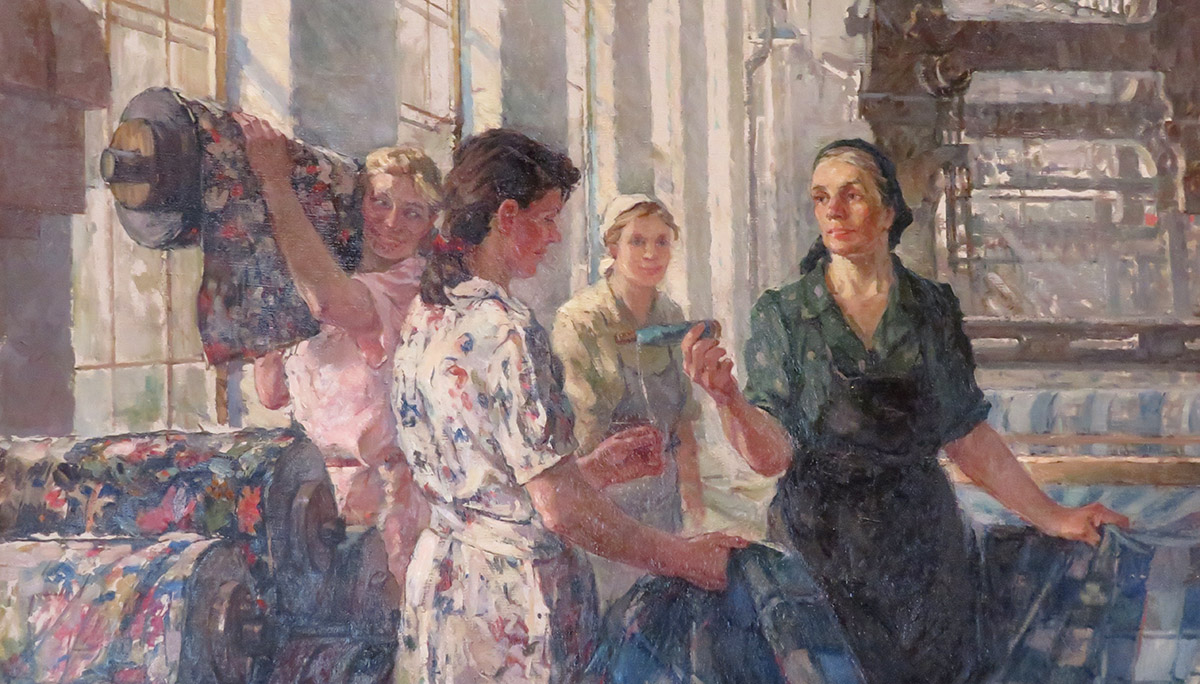
Specialists from the Perm National Research Polytechnic University (PNIPU) improved a computer vision system that automatically recognizes defects in fabrics produced by the textile industry, the university’s press service reported on April 24.
During the production of fabrics, various external defects appear (holes, uneven coloring of fabrics, etc.), which without special defect detection systems are difficult to identify and, most importantly, eliminate the cause in a timely manner to reduce. the volume of defective products.
Currently, product quality control systems typically use computer vision methods that process images obtained through photography and video recording and identify defects in the product. However, for quality control, such systems must take into account all types of defects.
Since in Russia there are practically no national complexes that provide complete quality control in the textile industry, PNIPU scientists decided to fill this gap. They have improved the computer vision method so that they can quickly and accurately detect all types of defects in tissue.
They presented the results of their work in the paper “Software for defect detection from full-format texture images in the textile industry,” published in the 2024 AIP Conference Proceedings.
A computer vision defect detection system typically reads images from sensors equipped with a camera, corrects these images to remove noise, blur, and other interference, and correctly locates defect areas.
The corresponding image edge recognition algorithm may depend on various methods. One of the most used methods is fuzzy logic, which, by processing photographs and videos according to a database, determines to what extent the elements belong to one type or another (defective or not, and if they are defective, to what extent). guy).
This algorithm is suitable for detecting defects in textile products, but its existing prototype does not take into account blurred color differences in the image, which can be used to determine both folds (fabric unevenness) and uneven fabric density.
Scientists at the Perm Polytechnic have improved the existing algorithm to eliminate this drawback. The head of the Department of Automation of Technological Processes of the Berezniki branch of the PNIPU, doctor of technical sciences Andrey Zatonsky, told how they did it:
“Our modified processing method includes two phases: a rapid phase and a more thorough phase. Different types of fabrics have their own brightness and contrast when photographing and recording videos. Therefore, in the first phase, the algorithm finds possible defects using color correction, and in the second, it checks the reliability of the definition of the defect, highlights it in color and transmits the result to the specialist on the screen. “The algorithm has been tested on images of four types of tissues and can detect tissue and coloration defects.”.
A test of the new algorithm on the example of a fabric with a defect in the irregularity of the fabric showed that this defect was discovered only by the program of Perm scientists.
In the new algorithm, the image is divided into two main parts (the general background and the defect, if any). When passing an image in which there is no defect through a diffuse output system, the output image will be completely colored in one color or will contain minimal mixtures of other colors.
The polytechnicians determined the average background distribution (the texture-to-background ratio typical of a particular fabric) for the textures of each material type. For denim it is 72%, for linen it is 67%, etc.
They used this parameter to move from the first phase of analysis to the second, where the presence of a defect is confirmed or denied. Rejection in the first phase is determined if the percentage of background distribution in any tissue area differs significantly from the average value.
In the second phase, the pixels corresponding to the defect in the image are marked in red and the operator receives a signal about the presence of the defect.
A low-cost, low-maintenance universal system for recognizing defects in the textile industry, improved by PNRPU scientists, will make it possible to quickly and accurately identify defects in the material at any stage of production, which will allow Russian manufacturers to improve the quality of the product. and reduce the cost of defects, the developers trust.
Source: Rossa Primavera
I am Michael Melvin, an experienced news writer with a passion for uncovering stories and bringing them to the public. I have been working in the news industry for over five years now, and my work has been published on multiple websites. As an author at 24 News Reporters, I cover world section of current events stories that are both informative and captivating to read.
